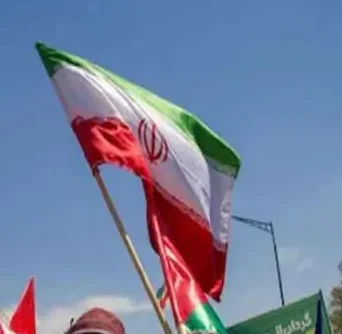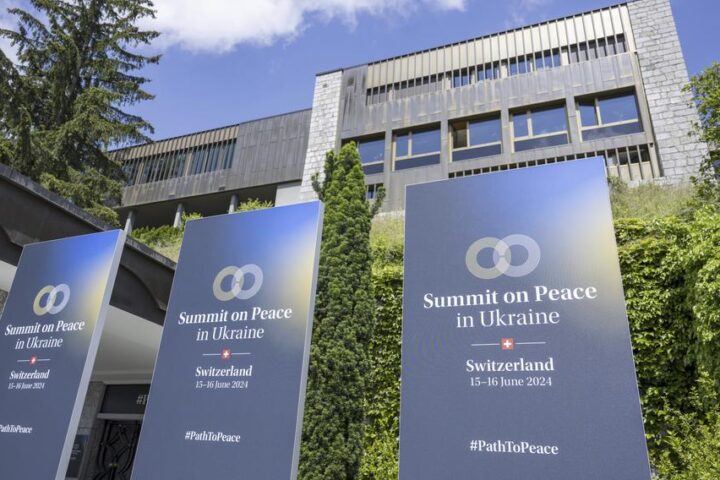Dubai: Iran’s supreme leader prayed Wednesday over the coffins of the country’s late president, foreign minister and other officials who were killed in a helicopter crash earlier this week. Later, hundreds of thousands of people followed a procession honouring the dead down Tehran’s main boulevard.
Iran’s Shiite theocracy views mass demonstrations as crucial evidence of its legitimacy and the people’s support.
Still, Wednesday’s funeral service for President Ebrahim Raisi and others saw a turnout that onlookers described as noticeably lower than the 2020 procession honouring Revolutionary Guard general Qassem Soleimani, who was killed in a US drone strike in Baghdad.
Many of the participants said they came to Tehran for the ceremony from other cities and towns across the Islamic Republic, an indication of how those in Iran’s capital viewed Raisi, who won the presidency in a record low turnout and later oversaw repeated crackdowns on all dissent — including in the wake of the 2022 death of Mahsa Amini that sparked street protests over Iran’s mandatory hijab, or headscarf.
Supreme Leader Ayatollah Ali Khamenei, who openly wept for Soleimani, also remained composed while reciting the standard prayer for the dead.
“Oh Allah, we didn’t see anything but good from him,” Khamenei said in Arabic, the language of Islam’s holy book, the Quran. He soon left and the crowd inside rushed to the front, reaching out to touch the coffins. Iran’s acting president, Mohammad Mokhber, stood nearby and openly cried.
The death of Raisi, Foreign Minister Hossein Amirabdollahian and six others in the crash on Sunday comes at a politically sensitive moment for Iran, both at home and abroad.
Raisi, who was 63, had been discussed as a possible successor to Iran’s supreme leader, the 85-year-old Khamenei. None of Iran’s living past presidents — other than Khamenei, who was president from 1981 until 1989 — could be seen in state television footage of Wednesday’s prayers. The authorities gave no explanation for their apparent absence.
Following the deadly helicopter crash, Iran set June 28 as the next presidential election. For now, there’s no clear favourite for the position among Iran’s political elite — particularly no one who is a Shiite cleric, like Raisi.
During Raisi’s term in office, Iran launched an unprecedented attack on Israel last month as its war on Hamas in the Gaza Strip rages on. Iran has supported Hamas throughout the war and provided weaponry to the militants.
Hamas leader Ismail Haniyeh attended the prayers Wednesday morning, just two days after the International Criminal Court’s prosecutor said he’d seek an arrest warrant for him and others over the October 7 attack that sparked the latest Israel-Hamas war. In the unprecedented assault on southern Israel, Hamas-led militants killed 1,200 people and seized 250 hostage.
The ICC prosecutor is also seeking arrest warrants for Israeli Prime Minister Benjamin Netanyahu and Defence Minister Yoav Gallant for their conduct in the war, which has seen more than 35,000 Palestinians killed in the Gaza Strip and also hundreds in the West Bank.
Haniyeh recounted meeting Raisi earlier this year in Tehran during Ramadan, the holy Muslim fasting month, and heard the president say the Palestinian issue remains the key one for the Muslim world. He also described Raisi calling the October 7 attack an “earthquake in the heart of the Zionist entity.”
Haniyeh’s presence at the funeral likely signalled Khamenei intends to continue his policy of arming militant groups in the wider Mideast — including Hamas, Lebanon’s Hezbollah and Yemen’s Houthi rebels — as a way to pressure its adversaries like Israel and the United States.
Mourners at the ceremony chanted: “Death to Israel!”
Pakistan’s Prime Minister Shehbaz Sharif and a delegation from the Taliban of Afghanistan, including their Foreign Minister Amir Khan Mutaqqi are expected to attend services in Tehran on Wednesday afternoon. Iraq’s Prime Minister Mohammed Shia al-Sudani also flew in for the ceremony, along with Armenian Prime Minister Nikol Pashinyan.
Even Egyptian Foreign Minister Sameh Shoukry travelled to Tehran, despite diplomatic relations between the countries being severed after the 1979 Islamic Revolution. Egypt and Iran have recently discussed reestablishing ties.
A single black turban was placed on top of Raisi’s casket during the morning service, which signifies he was considered a direct descendent of Islam’s Prophet Muhammad. People then carried the coffins out on their shoulders as chants of “Death to America!” erupted outside. The coffins were loaded onto a semitruck trailer for a procession through downtown Tehran to Azadi, or “Freedom,” Square.
People openly wept and beat their chests, a common sign of grief in the Shiite culture. They tossed scarves and other possessions up to the semitruck driving the caskets through Tehran, with coffin attendants brushing the items against the caskets in a gesture of blessing.
One man said he and his friends took a nearly seven-hour bus trip to attend the procession. Many expressed their sympathies for the dead, including Raisi.
“He was our president, the others were pilots and a minister, how can I be indifferent about their loss?” asked Sima Rahmani, a 27-year-old Tehran woman wearing a loose headscarf despite the risk of detention by police.
Prosecutors have warned people against showing any public signs of celebrating Raisi’s death and a heavy security force presence has been seen on the streets of Tehran since the crash. Many shops and stores noticeably remained open in Tehran during the ceremony, while some took off early for a long weekend.
“I did not vote for Raisi in 2021 election, but he was the president of all people,” said Morteza Nemati, a 28-year-old physics student at Tehran Azad University. “My presence is a way of paying tribute to him.”
Meanwhile, an Iranian official offered a new accounting of Sunday’s crash, further fuelling the theory that bad weather had led to it. Gholamhossein Esmaili, who travelled in one of the two other helicopters in Raisi’s entourage, told state TV that weather had been fine when the aircraft took off. But Raisi’s helicopter disappeared into heavy clouds and the others couldn’t reach the aircraft by radio.
Neither Amirabdollahian nor a bodyguard on board responded to calls. But Friday prayer leader from the city of Tabriz, Mohammad Ali Ale-Hashem, who was also on board, somehow answered two mobile phone calls, saying he was hurt, Esmaili said.
It wasn’t clear why Iran could not at that point track the phone signal.
“The conditions of the bodies found showed that they (died) immediately after the incident,” Esmaili said. “But Ayatollah Ale-Hashem (died) a few hours after the incident. He was alive for a short period.”















